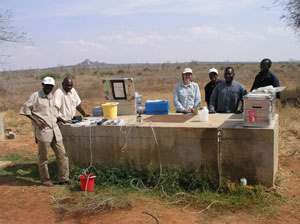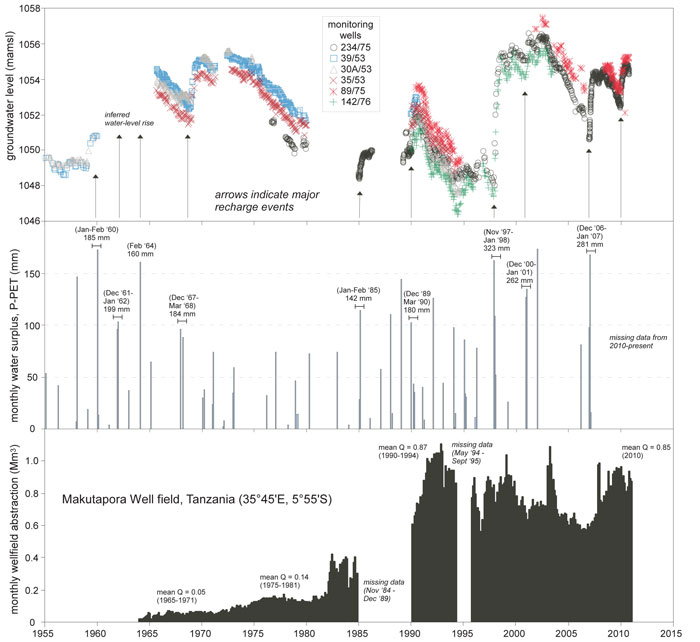High yielding groundwater supplies case study
This case study explored the sustainability and characteristics of higher yielding (>1 l/s) boreholes in weathered basement rocks.
Basement rocks underlie approximately 34 per cent of Africa's land surface, supporting more than 230 million rural inhabitants.
Increased irrigation, or more reliable town supplies, are expected to depend upon boreholes in weathered basement rocks being able to sustain yields that are at least ten times more than typically abstracted by handpumps.
The aquifer productivity maps (Figure 1) already show that the typical range of basement rocks is generally between 0.1 and 1 l/s; therefore higher yields are already atypical.
Uganda and Tanzania case study areas

Field studies were carried out in Uganda and Tanzania, targeting boreholes and wellfields that were already supplying >1l/s.
The aim was to assess the reliability of these larger supplies, and work out the conditions necessary to have these larger supplies by gathering historical data on borehole performance, interpreting aquifer test data and taking various samples for groundwater residence times.
Results
The results of the case study indicate:
- High-yielding boreholes in weathered basement rocks exist and are commonly located in areas where alluvial sediments overlie basement rocks, locally enhancing aquifer transmissivity and storage. Enhanced groundwater storage in this aquifer environment is of particular importance in semi-arid regions (e.g. Dodoma, Tanzania) where significant recharge occurs episodically in association with extreme climate events a few times or less each decade (Figure 2).
- Intensive abstraction (>1 l/s) may still be possible in weathered basement rocks not overlain by alluvium. For example, a survey of 2200 successfully sited boreholes from nine countries indicated yields of >1 l/s in 35% of boreholes, and yields of >10 l/s in 2% of boreholes.
Contact
Contact Dr Alan MacDonald or Dan Lapworth for further information








